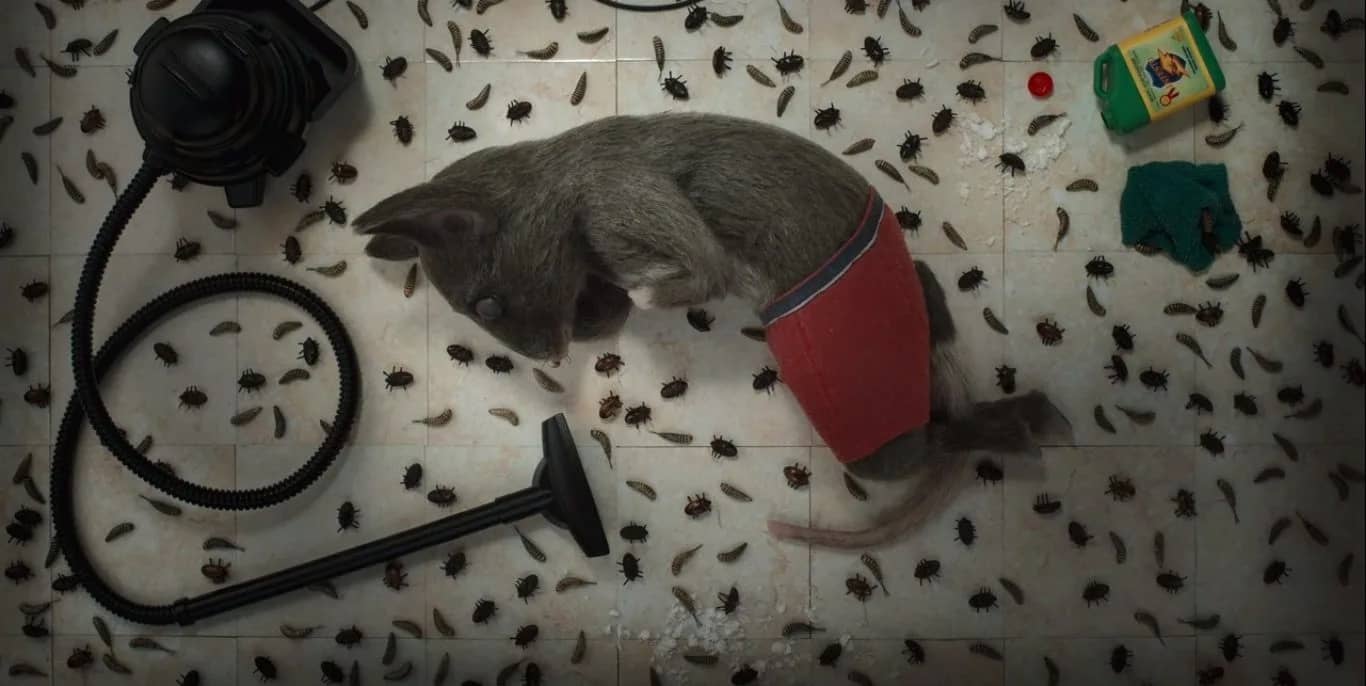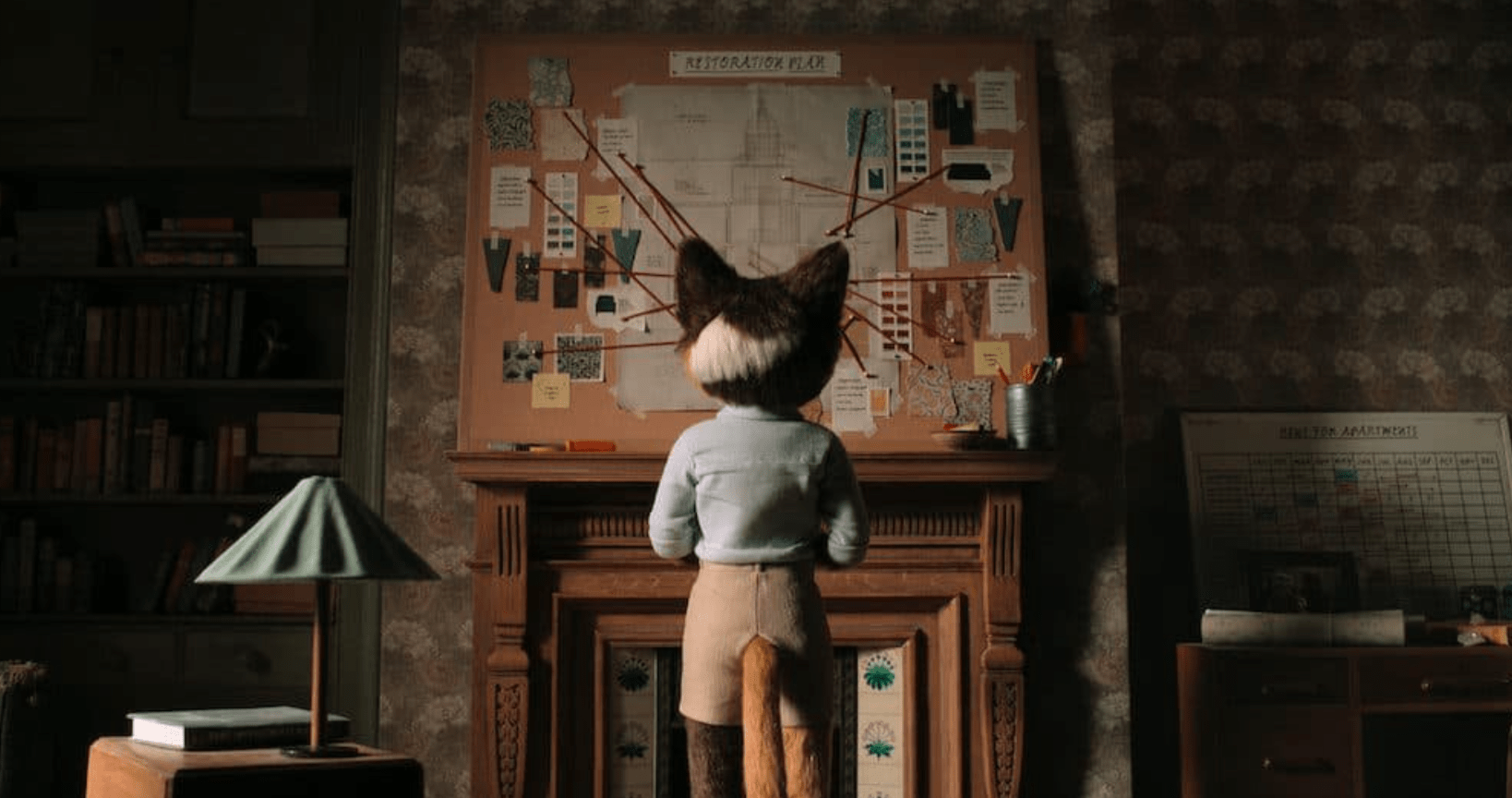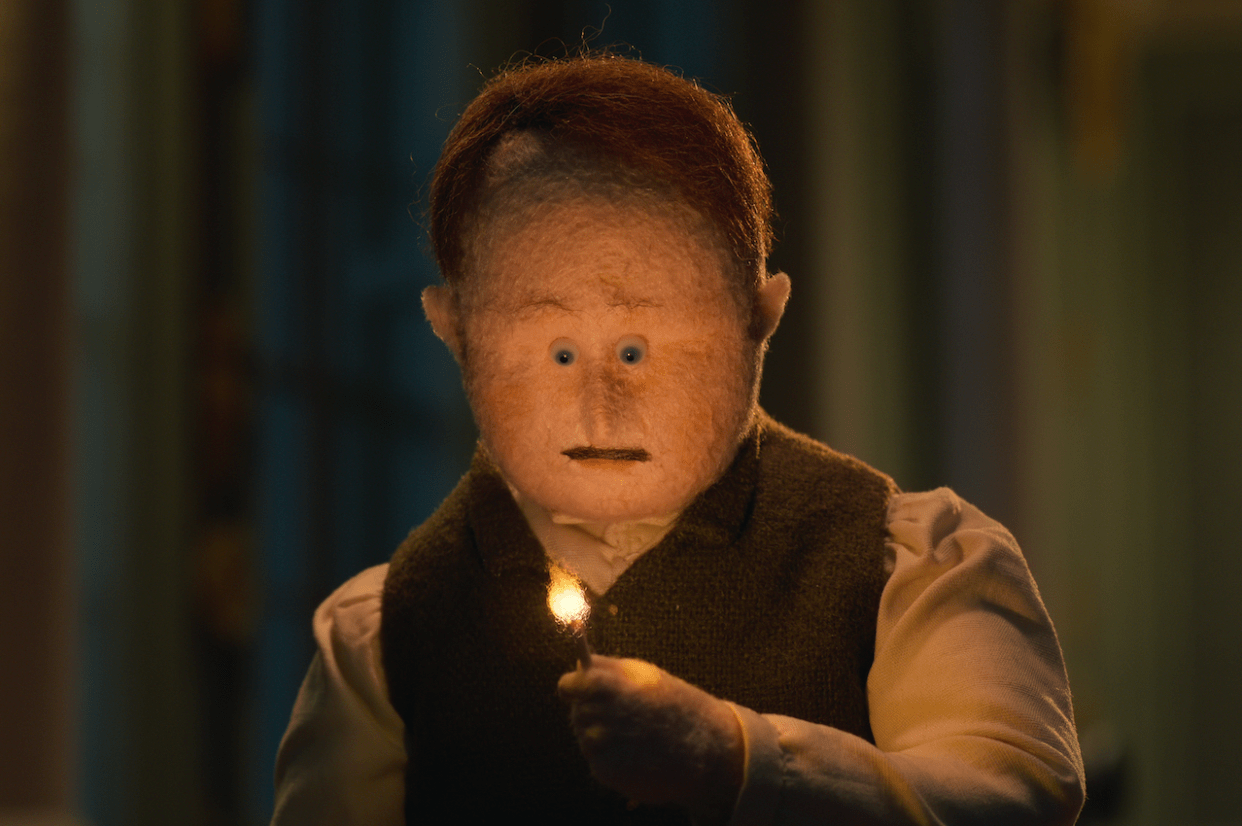Author: Annie Hoang
As someone who has distinct childhood memories of nightmares starring Wallace and Gromit, it probably wasn’t the best idea for me to open the new year by watching Netflix’s latest stop-motion horror film. In no way does this film shy away from the impressive amount of creepiness achievable through a bit of clay and felt, but, as it stands, I have yet to experience any more claymation-induced nightmare.
Surprisingly, I’m a little disappointed by that.
The House is a three-part film written by Enda Walsh that centers around the inhabitants of–obviously–a house, spanning across different time periods for its three sets of characters.
The first chapter, titled “And heard within, a lie is spun,” follows a human family of four who wilt under the judgmental eyes of wealthy family members and jump at the offer of a luxurious home from a mysterious architect. As they spend time in “The House”, the parents become more and more obsessed with all it has to offer. Meanwhile, the sinister nature of what they’ve agreed to is slowly unraveled by their neglected children.

Chapter two, “Then lost is truth that can’t be won,” is set in modern times, when a lonely rat risks all his life savings on remodeling “The House” in hopes of selling it to the highest bidder. Unfortunately, he struggles to gain any bidders, instead saddled with unwelcome houseguests who resemble the insect pests that scuttle around the inner walls of the property.

The third and final chapter, titled “Listen again and seek the sun,” takes on a far lighter atmosphere than the other two. Its main character, a cat living in a future where most of the world has been flooded, hopes to make a successful apartment complex from the remains of “The House” and struggles to accept that it is a pointless endeavor.

The House is an impressive example of visual and auditory mastery, with its unsettling character designs, thought-provoking symbolism, and attention to detail in its lighting, sound, and set design. The three narratives of the film are tied together by what “The House” represents for each character. It acts as an object of hope, a last ditch attempt at defying the bleak realities they face. Their judgment becomes clouded by delusions of its possibility, and downfall comes in stubbornly refusing to accept that rather than achieving greatness, they are simply grasping onto the things that they cannot have. Although these themes persist throughout the film, the tone of each chapter differs in a way that falls flat and disappoints the impressive detail of its sound and visuals.

Honestly, my opinion on the film boils down to this: The House is not a waste of time, but it is a waste of potential. The first chapter is a thing of nightmares, surely surpassing anything that Wallace and Gromit could ever inspire. It is clearly the strongest of the three, masterfully building tension and, despite its short run time, successful in garnering sympathy for its two youngest characters. As an audience member, you watch with dread as the children sink deeper and deeper into a horrific situation, their parents standing idly by. The increasingly disturbing facial expressions, detailed sound design, and growing tension all combine to build the discomfort already established by the strange nature of the situation. This is followed by a story that succeeds in nauseating visuals but falls short in achieving the same levels of tension-building and eeriness as its predecessor. I quickly found my disappointment growing as I watched the final chapter, the unsettling tone established by the first chapter’s artistry near non-existent at this point.
Each chapter is a great piece of storytelling on its own, but when placed back-to-back in a sequence I found myself wondering what the filmmakers were attempting to achieve and mourning the loss of momentum. Perhaps these jarring differences in tone and pacing may be due to a lack of communication between the directors, who changed from chapter to chapter, or the vague objectives of Walsh’s writing. Perhaps it was a combination of weaknesses in both. Whatever the case, I found myself disappointed that the film as a whole didn’t have the same blend of impressive artistry and strong storytelling often found in the stop-motion films of a lighter tone that are produced by Laika. The success of a horror stop-motion film on Netflix would have been a great way to mainstream this medium into more adult stories, utilizing the unique creepiness achievable only through the unnerving beady eyes and doll-like expressions.
Annie Hoang | This reporter is anti-Wallace and Gromit | KXSU Arts and Music Reporter
